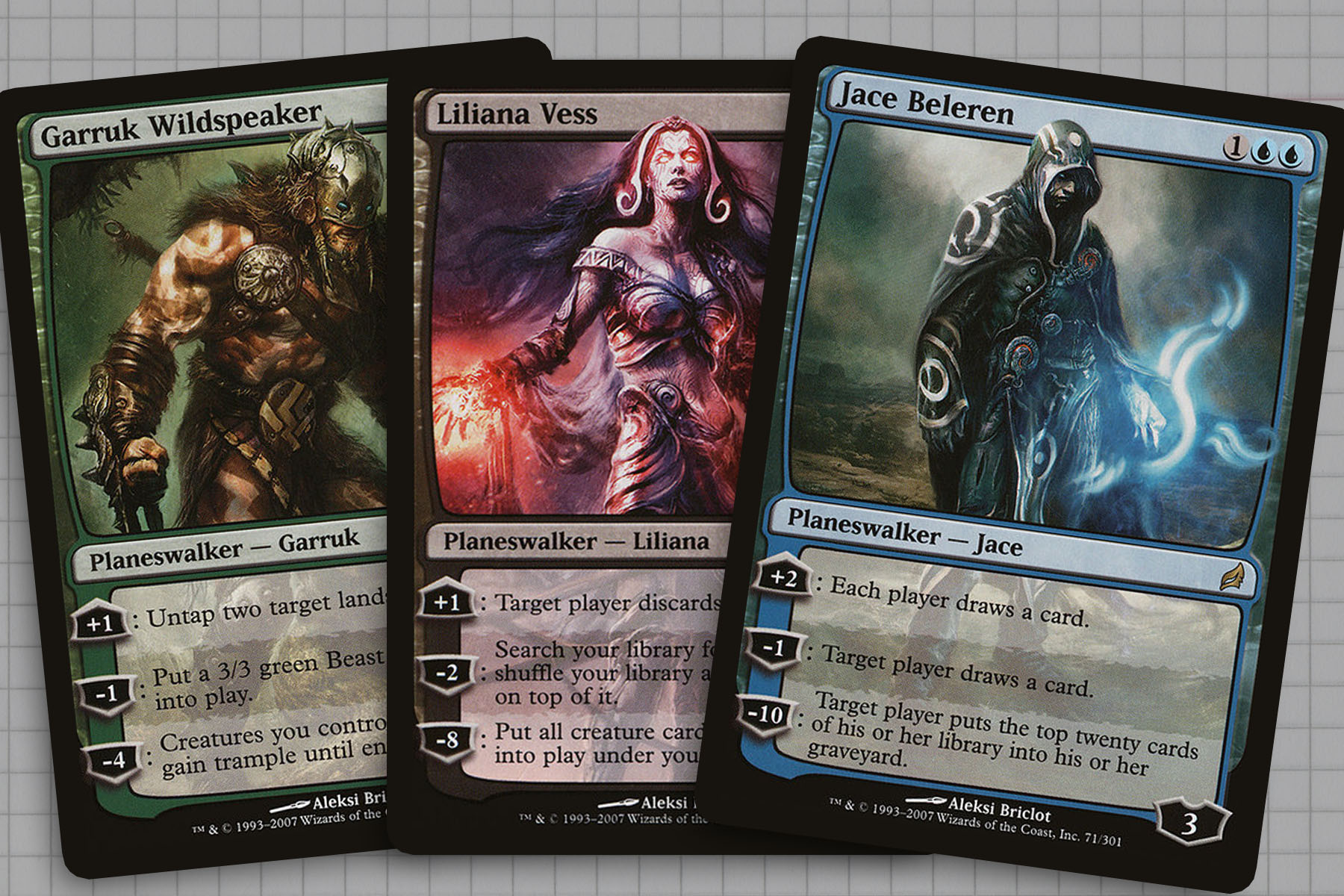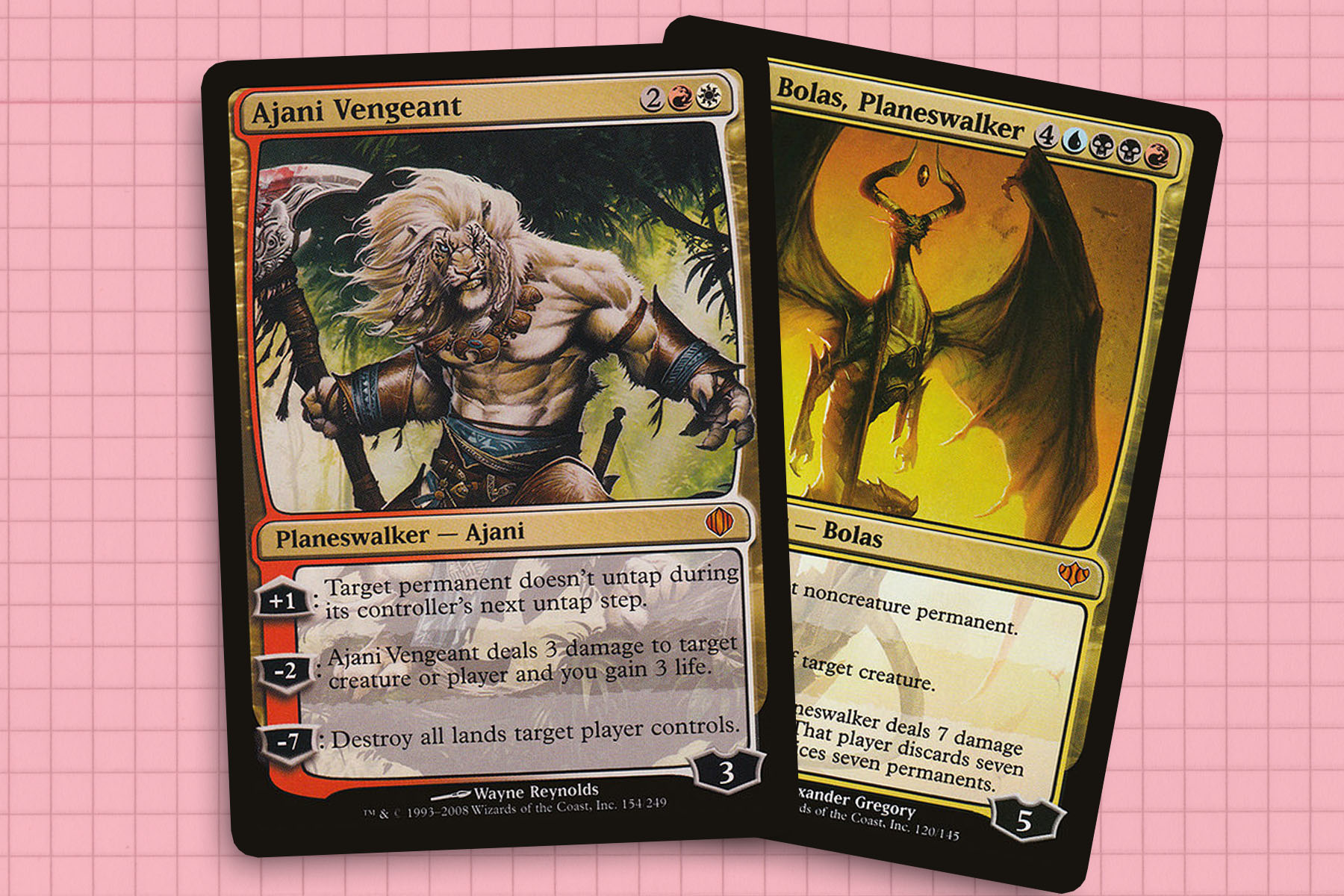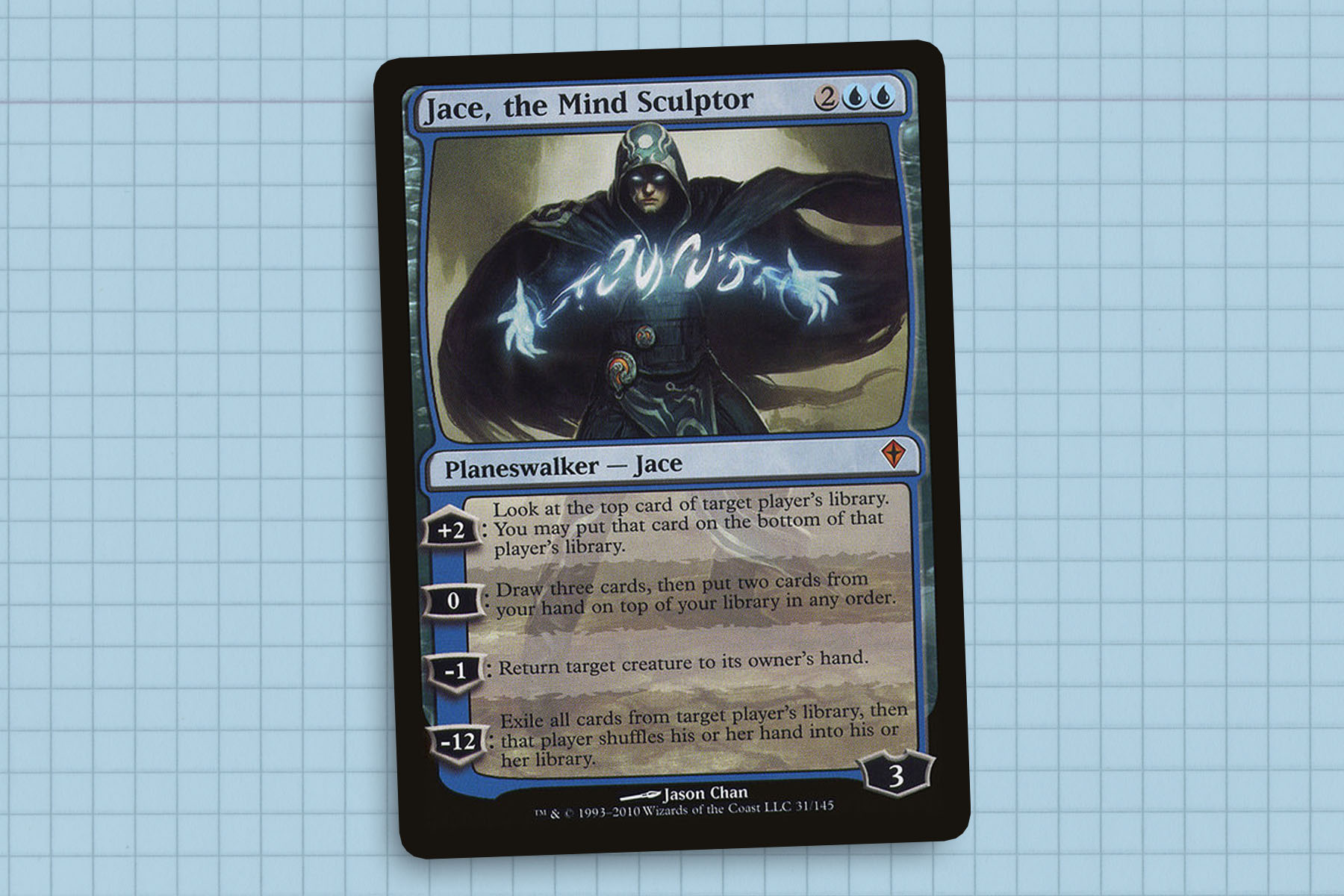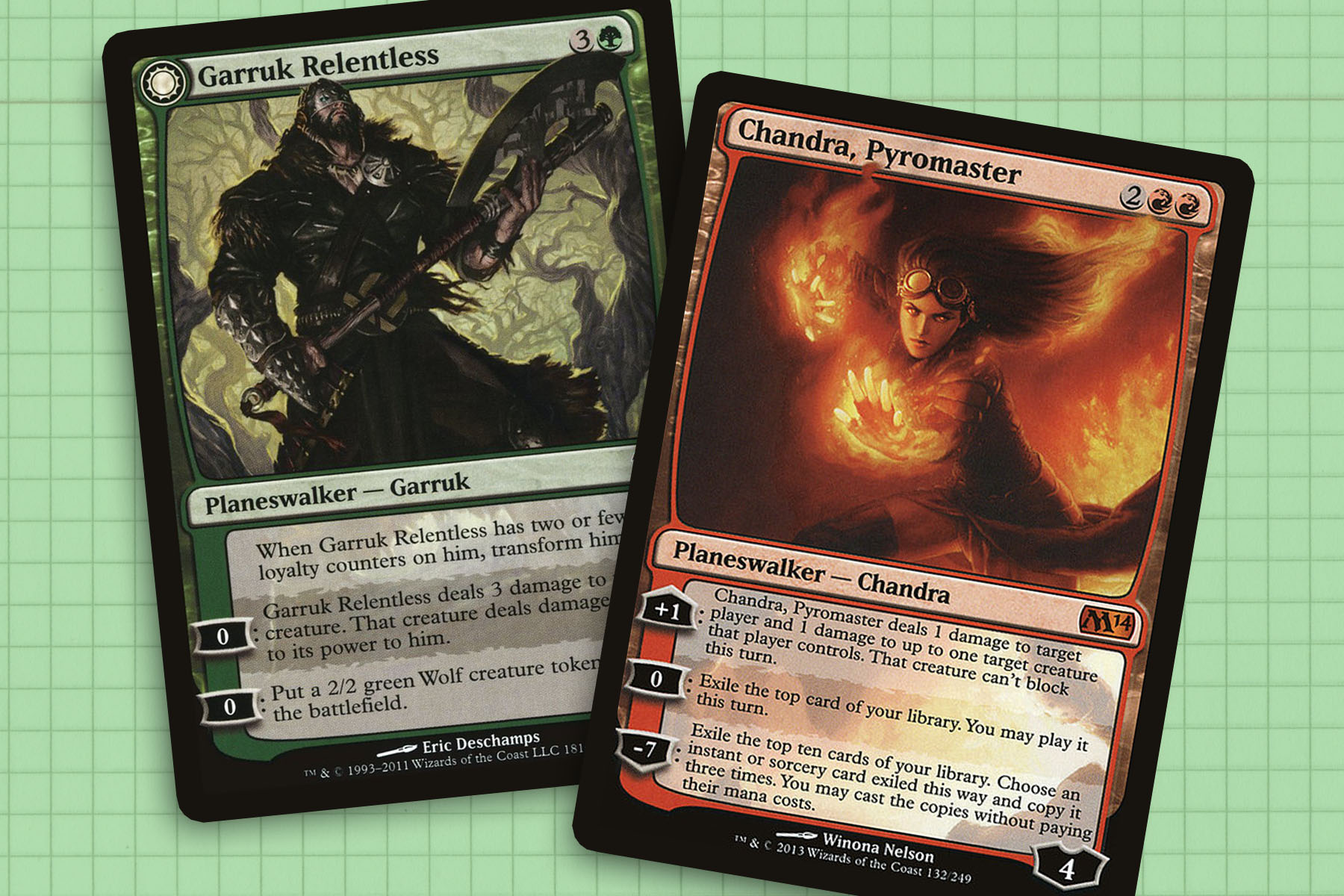I have come to love the design of Magic. At first I was fascinated by the color pie, the annual launch of keywords, and the idea of designing a game for so many different audiences. But over the years, the graphic designer in me started to look to the actual graphic design of the game. Since then I’ve been basking in the wonder of that aspect as well. This culminated three years ago in a two part series I did on my Tumblr blog about the design of the Magic card frame: one looking at Eighth Edition through Rise of the Eldrazi and the other Scars of Mirrodin through Battle for Zendikar.
To my surprise, those entries got brought back into the spotlight when Rhystic Studies did their video on the Magic card frame last year, citing my posts as a resource. While I always loved those articles, I never felt that they were worth revisiting here on Hipsters of the Coast, especially after Sam created what I believed to be a rich historical piece through his video. But in the spirit of my old project, there is one topic that I would like to see covered more in-depth than it currently is and with a centralized place for an audience to get a full picture: the history of the design of planeswalkers.
Like every other part of Magic, the story of designing planeswalkers is really a story of periodically breaking the rules. My goal today is to shed some light on the full landscape of planeswalker design, giving the topic historical context and point out different precedents as they occurred. Hopefully this can be a prime resource for anyone looking to investigate the topic in the future.

The Lorwyn Five
Planeswalkers were originally meant to debut during Future Sight as a trio of proto-versions of the characters we would later know as Garruk, Liliana, and Jace. The designs originally took a cue from the “structures” idea Richard Garfield had presented during the design of Ravnica: City of Guilds—permanents that other players could attack to dismantle. But the designers also wanted them to feel like another player at the table rather than a mere card.
To achieve this, the original designs acted a lot like what we now know as sagas from Dominaria, activating abilities once per turn in a fixed sequence. For example, Fendari, the Proto-Garruk:
Fendari
4G
Planeswalker – Fendari
9 (loyalty)
1. Put two 1/1 green Saproling tokens into play. Lose 1 loyalty.
2. For each Saproling you have in play put a 1/1 green Saproling token into play. Lose 1 loyalty.
3. All Saprolings get +5/+5 until end of turn. Lose 3 loyalty.
This template left the planeswalkers feeling like robots with awkward timing. They needed to act with more of a sense of agency. As this redesign developed, plans for the inclusion of planeswalker in Future Sight were put on hold by Randy Buehler, who wanted to give Design more time to fine tune the designs.
These initial issues were resolved fairly quickly by Mark Rosewater’s account. The loose cycle of Ajani Goldmane, Chandra Nalaar, Garruk Wildspeaker, Jace Beleren, and Liliana Vess premiered that Fall in Lorwyn. This new card type came with some design and development principles, including but not limited to:
- They must feel like another Magic player has sat down to play with you.
- They must work well in any deck against any opponent’s deck.
- Each one has a +N ability, a –N ability, and a –BIG N “Ultimate” ability.
- The Ultimate should be jaw-droppingly awesome.
- They should all be decent in Constructed, and some of them should be awesome in Constructed.
Each of the Lorwyn Five were created as embodiments of their color: Ajani gains life and buffs creatures, Jace draws cards and mills, Liliana tutors and reanimates, Chandra deals damage, and Garruk ramps into Overrun. While not all of them were perfect, they were well-balanced first outings for each color.
Not only did the original five play no role in the story on the plane of Lorwyn, but no new planeswalkers were added to the design file for the Morningtide, Shadowmoor, or Eventide. This unfortunately meant that when planeswalkers were revealed to the public and immediately beloved, they would not be seen again until Shards of Alara.

Innovations on Alara
The next cycle would take advantage of the new Mythic rarity. Wizards wasted little time pushing the direction of planeswalkers both in the game and the narrative. Ajani Vengeant demonstrated both that planeswalkers could return at any time or anywhere the lore needed them, and they could shift colors over time. This also set a precedent making it possible to see the timeline of these characters out of chronological order, as this Ajani is a younger depiction just after his spark ignites.
Tezzeret the Seeker flies in the face of one of the guiding principles for planeswalker design: “they must work well in any deck against any opponent’s deck.” While we would see a much more linear design in Nissa Revane the following year, Tezzeret was the first niche planeswalker design. I think this was smart move, as each planeswalker being a jack-of-all-trades was not a bearing wall of their design. Funny how quickly Wizards realized it themselves.
While not explicitly creating an emblem on her first printing, Elspeth, Knight-Errant would retroactively make the first emblem. She also broke a design principle by having two plus abilities, a detail that made her a Standard powerhouse. That principle was inevitably going to be broken, and it doesn’t surprise me that it happened so quickly.
And while there would be further expansion of this design space in the future, Nicol Bolas, Planeswalker confirmed for the audience that pre-mending planeswalkers still existed in some fashion. This was the first time we would see a legendary creature ascend to the planeswalker card type. And as callbacks go, I like that Bolas’s ultimate made reference to his original card from Legends while also being built upon to make it more jaw-dropping.

Zendikar Possibilities
Zendikar block finished off the first three years of planeswalker design with some notable additions to the design space. Many know Jace, the Mind Sculptor as a design mistake and by extension, the first planeswalker banned in Standard. I believe in hindsight the goal of making the four ability frame feel awesome caused them to underestimate Jace’s power. Lead Developer Mike Turian chose to break a design principle by introducing the zero loyalty cost via Jace’s Brainstorm ability and still allowed Jace to protect himself through a minus ability that negated threats that didn’t come with haste. While perhaps a mistake, Wizards would learn an important lesson in planeswalker design.
On the other side of the coin, Rise of the Eldrazi brought us two interesting deviations from the established design. I’ve said in the past that Gideon Jura is my favorite planeswalker design, and I think a lot of that comes from how immediately it is apparent that he works different than the other walkers we’d seen up that point. Not only does he turn into a creature, but he also had no true ultimate, opting to instead have a path to victory via combat. I would also be remiss if I didn’t mention Sarkhan the Mad as the first planeswalker with no built-in way to gain loyalty, a trait that would not be revisited until War of the Spark, nine years later.

Two Setbacks, Two Successes
The next few years lessened the appearance of dynamic innovations in rapid succession. There a was a period starting Scars of Mirrodin where planeswalkers were certainly built to be powerful. But as I see it, designs came with less flashy innovations. But that doesn’t mean that risks weren’t taken.
Tibalt, the Fiend-Blooded was the first planeswalker to essentially have two ultimates. Unfortunately, he is most remembered as Wizards’s first attempt at a two-mana planeswalker. While I can appreciate what they were trying to do, his design was viewed as a failure and a lesson to designers.
While not a failure in design, Liliana of the Dark Realms was a different kind of mistake. On the surface, the card was another incarnation of the beloved necromancer, but nothing the card did actually felt like Liliana. This was Wizards waking up to the fact that planeswalkers didn’t need to exemplify every aspect of their color, and that their time was better spent developing each character’s identity and power set.
In this time period we had some successes as well. Garruk Relentless became our first planeswalker depicted on a double-faced card. A smaller but relevant innovation also came on Garruk, as the first introduction of a triggered ability on a planeswalker. I have my qualms with the trigger, as it doesn’t work as a solid explanation of how Garruk’s transformation works in-universe. But I believe it wiser than their original idea, “Whenever an opponent casts a card with Liliana in its name, transform CARDNAME.”
I won’t pretend to understand all the components that go into designing a planeswalker, but it seemed clear that nailing down solid design space for red planeswalkers did not come easy. For a long stretch of time, the Design team was doing a lot of work to try to create a Constructed-viable red planeswalker. To many, Koth of the Hammer had been the peak. From a historical standpoint, I believe Chandra, Pyromaster was the next solid attempt, helped most of all by the creation of impulsive draw. While outclassed in many ways by looting, I still admire it for the more emotional and reckless flavor.
That brings us to the cusp of a new era of planeswalker design. Come back tomorrow for Part 2!
Ryan Sainio is a Graphic Designer who writes about EDH and the EDH community. He has been playing Magic: The Gathering since 7th Edition in 2002 and values flavorful and fun gameplay over competitively optimized decks.

